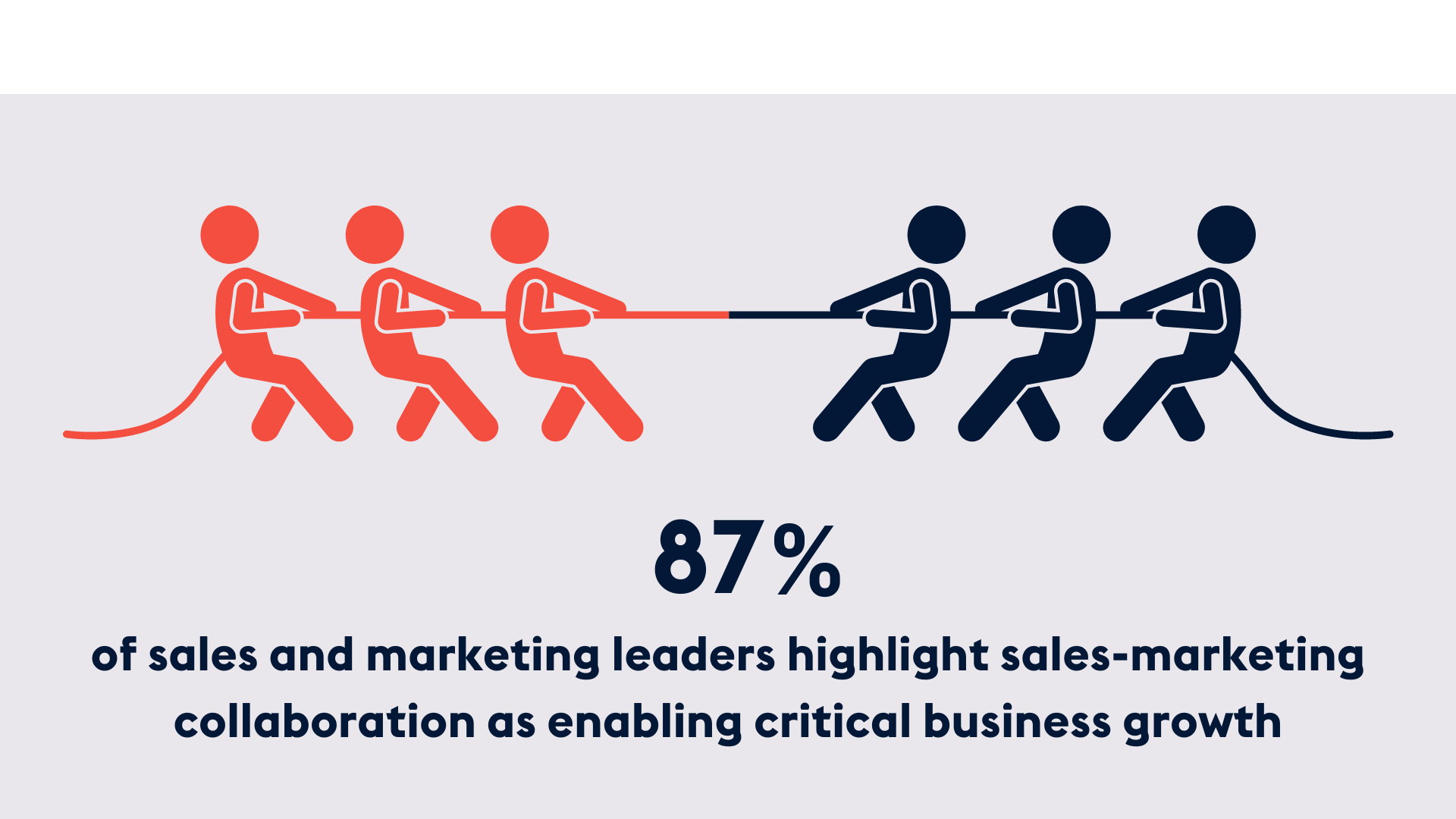
Every team has a role to play in bringing in (and delighting) new clients, optimising performance within their discipline, and, ultimately, growing your company. Business is best when everyone can work to their full potential within their role — but looks beyond it, too, to enable the work of others around them.
For sales and marketing, this synergy is particularly key. With thoughtful content, your marketing brains can initially catch leads’ attention. Nurturing this interest via well-designed touchpoints, your marketing team will evolve those leads into qualified prospects. Then it’ll be your sales reps’ time to shine, converting those prospects into returning clients.
Put simply, sales and marketing can achieve much more when they work together. Below, we’ll explore the benefits of this synergy, how to create sales-marketing alignment, and resources to guide your company toward this goal.
Before we take a look at the benefits of putting sales and marketing on the same page, let’s explore the scale of the disconnection issue:
Friction is widespread — when sales and marketing should be each other’s best allies. And when sales and marketing do align, the results are impressive:

In an ideal scenario, every time your sales rep speaks with a potential customer, they’ll know what content from your company the prospect has already viewed. This enables interactions to rapidly move beyond generic pitching, as your sales reps can respond to prospects’ specific questions, aspirations and doubts.
What’s more, your reps will have as much confidence as possible that the prospect interaction is well worth their effort, given that marketing will have qualified the lead. Overall, leading to more fulfilling, seamless experiences for prospects and reps alike.
As you begin to shape this sales-marketing synergy, we’ve compiled key elements to consider:
1. Ensure goal alignment for clear mutual benefit
Usually, sales and marketing teams have different key performance indicators (KPIs), meaning different goals. Identify shared goals that both teams can measure and influence for greater alignment. Marketing will need to gauge metrics for lead quality, not just quantity. For example, the ratio of leads vs qualified leads, close rates, and revenue per lead. For its part, sales will need to prioritise incoming leads from marketing, monitoring related deal-close success.
2. Schedule regular combined strategy meetings
Make connection between sales and marketing a priority. Remember, cross-department alignment doesn’t happen overnight and it needs to be nurtured. Periodic reviews of what’s working — and not — for both sales and marketing are vital to fostering effective collaboration, avoiding silos between teams and keeping mutual efforts focused.
3. Leverage sales’ expertise with content resources
Marketing works hard to plan, create and promote content. Coordinate marketing offers, assets and sales enablement resources together and keep them easily accessible in one shared place. Encourage sales team members to use that content on their social media profiles and organise a campaign calendar with ideas from both teams for future content creation.
4. Foster mutual sales-marketing insights
For both teams to empower each other, they need knowledge of the other’s day-to-day. To help marketing better understand your products or services, for example, have sales give them their usual pitch. If marketing also takes time to listen to sales calls, they’ll gain a better understanding of your company’s personas, prospect needs and sales methods.
Using this insight, marketing can develop and deliver more relevant, resonant content. They’ll then need to loop sales into their content marketing flow, keeping reps updated on the campaigns and promotions that leads will be seeing.
5. Encourage mutually-beneficial automation
Given the significant overlap between sales and marketing, it logically follows that each team could benefit from the automation already boosting the other’s efficiency, and overall performance.
Essentially, this comes down to the insight into prospect and customer behaviour that automation can provide. Enhancing interdepartmental alignment, improving targeted campaigns and nurturing better-quality leads.
Utilising marketing insights can support sales to concentrate on the right prospects, engage with better-nurtured leads and better grasp (potential) clients’ wants, needs and behaviour patterns.
Sales insights, meanwhile, can underpin better-designed, comprehensive marketing campaigns. For example:
CRM tools’ end goal is to increase sales via elevating customer experience and loyalty. For marketing, the intelligence gained informs a clearer picture of customer attributes, preferences and behavioural trends. Likewise, who they interact with within your company and how, meaning they can better design useful, tailored and attention-generating marketing materials. With the right CRM solution, you’ll be primed to hand both marketing and sales the blend of data analytics and behavioural insights that’s key to evolving leads to customers, then to loyal word-spreaders about your brand.
HubSpot invented the notion of ‘smarketing’ in the early 2000s, encapsulating sales-marketing alignment via regular, open two-way communication. So how do HubSpot tools enable smarketing success?
✓ Ensure seamless communication and handover
Enable sales and marketing to communicate with a combined HubSpot email or Slack channel integrated with your HubSpot instance.
Conversation intelligence tools also facilitate sharing sales call recordings with marketers, for direct awareness of prospects’ most pressing queries, pain points and aims.
Attract more promising accounts with HubSpot’s ABM software. Enhance these client relationships with personalised outreach, keeping sales and marketing aligned via a shared dashboard.
Hand over smoothly from marketing to sales, and vice versa, with HubSpot’s automated workflow capabilities.
✓ Share updated prospect data
HubSpot’s all-in-one CRM platform creates a single source of truth for your customer data, sales opportunities and mutually-defined smarketing processes and goals.
From lead to conversion, keep all the relevant information centralised, accurate and accessible for every team — not just sales and marketing!
✓ Boost sales via integration with marketing
Combine the power of Sales Hub and Marketing Hub with HubSpot’s customisable flexibility. All your smarketing tools, in one easy-to-use platform.
Holistic and scalable, HubSpot offers the tools that companies ready to invest in smarketing need. At Provident CRM, we guide businesses to implement custom HubSpot solutions, paving the way to generating maximum value from their customer relationships. Through a user-friendly software solution, set up with smarketing front of mind, that’s ready to grow as their business does.
To find out more about how HubSpot can serve your sales and marketing ambitions, reach out to our team.